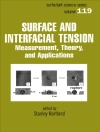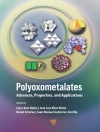Inorganic materials show a diverse range of important properties that are desirable for many contemporary, real-world applications. Good examples include recyclable battery cathode materials for energy storage and transport, porous solids for capture and storage of gases and molecular complexes for use in electronic devices. An understanding of the function of these materials is necessary in order to optimise their behaviour for real applications, hence the importance of ‘structure–property relationships’.
The chapters presented in this volume deal with recent advances in the characterisation of crystalline materials. They include some familiar diffraction methods, thoroughly updated with modern advances. Also included are techniques that can now probe details of the three-dimensional arrangements of atoms in nanocrystalline solids, allowing aspects of disorder to be studied. Small-angle scattering, a technique that is often overlooked, can probe both ordered and disordered structures of materials at longer length scales than those probed by powder diffraction methods.
Addressing both physical principals and recent advances in their applications, Structure from Diffraction Methods covers:
- Powder Diffraction
- X-Ray and Neutron Single-Crystal Diffraction
- PDF Analysis of Nanoparticles
- Electron Crystallography
- Small-Angle Scattering
Ideal as a complementary reference work to other volumes in the series (Local Structural Characterisation and Multi Length-Scale Characterisation), or as an examination of the specific characterisation techniques in their own right, Structure from Diffraction Methods is a valuable addition to the Inorganic Materials Series.
Tabla de materias
Inorganic Materials Series Preface xi
Preface xiii
List of Contributors xv
1 Powder Diffraction 1
Kenneth D. M. Harris and Andrew Williams
1.1 Introduction 1
1.2 The Similarities and Differences Between Single-Crystal nd Powder XRD 2
1.3 Qualitative Aspects of Powder XRD: ‘Fingerprinting’ of Crystalline Phases 6
1.4 Quantitative Aspects of Powder XRD: Some reliminaries Relevant to Crystal Structure Determination 8
1.4.1 Relationship between a Crystal Structure and its Diffraction Pattern 8
1.4.2 Comparison of Experimental and Calculated Powder XRD Patterns 10
1.5 Structure Determination from Powder XRD Data 12
1.5.1 Overview 12
1.5.2 Unit Cell Determination (Indexing) 14
1.5.3 Preparing the Intensity Data for Structure Solution: Profile Fitting 15
1.5.4 Structure Solution 16
1.5.5 Structure Refinement 21
1.6 Some Experimental Considerations in Powder XRD 22
1.6.1 Synchrotron versus Laboratory Powder XRD Data 22
1.6.2 Preferred Orientation 24
1.6.3 Phase Purity of the Powder Sample 25
1.6.4 Analysis of Peak Widths in Powder XRD Data 26
1.6.5 Applications of Powder XRD for In Situ Studies of Structural Transformations and Chemical Processes 28
1.7 Powder Neutron Diffraction versus Powder XRD 30
1.8 Validation of Procedures and Results in Structure Determination from Powder XRD Data 33
1.8.1 Overview 33
1.8.2 Validation before Direct-Space Structure Solution 34
1.8.3 Aspects of Validation following Structure Refinement 36
1.9 A more Detailed Consideration of the Application of Powder XRD as a ‘Fingerprint’ of Crystalline Phases 40
1.10 Examples of the Application of Powder XRD in Chemical Contexts 45
1.10.1 Overview 45
1.10.2 Structure Determination of Zeolites and Other Framework Materials 46
1.10.3 In Situ Powder XRD Studies of Materials Synthesis 48
1.10.4 Structure Determination of New Materials Produced by Solid-State Mechanochemistry 50
1.10.5 In Situ Powder XRD Studies of Solid-State Mechanochemical Processes 53
1.10.6 In Situ Powder XRD Studies of a Polymorphic Transformation 55
1.10.7 In Situ Powder XRD Studies of a Solid-State Reaction 58
1.10.8 Establishing Details of a Hydrogen-Bonding Arrangement by Powder Neutron Diffraction 58
1.10.9 Structure Determination of a Material Produced by Rapid Precipitation from Solution 60
1.10.10 Structure Determination of Intermediates in a Solid-State Reaction 62
1.10.11 Structure Determination of a Novel Aluminium Methylphosphonate 62
1.10.12 Structure Determination of Materials Prepared by Solid-State Dehydration/Desolvation Processes 63
1.10.13 Structure Determination of the Product Material from a Solid-State Photopolymerisation Reaction 66
1.10.14 Exploiting Anisotropic Thermal Expansion in Structure Determination 68
1.10.15 Rationalisation of a Solid-State Reaction 69
1.10.16 Structure Determination of Organometallic Complexes 71
1.10.17 Examples of Structure Determination of Some Polymeric Materials 72
1.10.18 Structure Determination of Pigment Materials 73
1.11 Conclusion 74
References 75
2 X-Ray and Neutron Single-Crystal Diffraction 83
William Clegg
2.1 Introduction 83
2.2 Solid-State Fundamentals 86
2.2.1 Translation Symmetry 87
2.2.2 Other Symmetry 91
2.2.3 An Introduction to Non-Ideal Behaviour 98
2.3 Scattering and Diffraction 101
2.3.1 Fundamentals of Radiation and Scattering 102
2.3.2 Diffraction of Monochromatic X-Rays 103
2.3.3 Diffraction of Polychromatic X-Rays 110
2.3.4 Diffraction of Neutrons 111
2.3.5 Some Competing and Complicating Effects 114
2.4 Experimental Methods 119
2.4.1 Radiation Sources 119
2.4.2 Single Crystals 124
2.4.3 Measuring the Diffraction Pattern 126
2.4.4 Correcting for Systematic Errors 127
2.5 Structure Solution 128
2.5.1 Direct Methods 130
2.5.2 Patterson Synthesis 131
2.5.3 Symmetry Arguments 132
2.5.4 Charge Flipping 133
2.5.5 Completing a Partial Structure Model 134
2.6 Structure Refinement 138
2.6.1 Minimisation and Weights 139
2.6.2 Parameters, Constraints and Restraints 139
2.6.3 Refinement Results 140
2.6.4 Computer Programs for Structure Solution and Refinement 141
2.7 Problem Structures, Special Topics, Validation and Interpretation 142
2.7.1 Disorder 142
2.7.2 Twinning 143
2.7.3 Pseudosymmetry, Superstructures and Incommensurate Structures 145
2.7.4 Absolute Structure 147
2.7.5 Distinguishing Element Types, Oxidation States and Spin States 148
2.7.6 Valence Effects 149
2.7.7 Diffraction Experiments under Non-Ambient Conditions 150
2.7.8 Issues of Interpretation and Validation 151
Software Acknowledgements 153
References 153
3 PDF Analysis of Nanoparticles 155
Reinhard B. Neder
3.1 Introduction 155
3.2 Pair Distribution Function 160
3.3 Data Collection Strategies 168
3.4 Data Treatment 170
3.4.1 Calculation of G(r) from a Structural Model 175
3.4.2 Data Modelling 183
3.5 Examples 184
3.5.1 Local Disorder versus Long-Range Average Order 185
3.5.2 Zn Se Nanoparticle 189
3.5.3 Decorated Zn O Nanoparticle 194
3.6 Complementary Techniques 197
References 199
4 Electron Crystallography 201
Lu Han, Keiichi Miyasaka and Osamu Terasaki
4.1 Introduction 201
4.2 Crystal Description 203
4.2.1 Fourier Transformation and Related Functions 203
4.2.2 Lattices 204
4.2.3 Crystals and Crystal Structure Factors 205
4.2.4 Simple Description of Babinet’s Principle 206
4.3 Electron Microscopy 208
4.3.1 Interaction between Electrons and Matter 208
4.3.2 Scanning Electron Microscopy 209
4.3.3 Transmission Electron Microscopy 214
4.4 Electron Diffraction 216
4.4.1 X-Rays (Photons) versus Electrons 216
4.4.2 Scattering Power of an Atom 217
4.4.3 Crystal Structure and Electron Diffraction 219
4.4.4 Relationship between Real and Reciprocal Space 221
4.4.5 Friedel’s Law and Phase Restriction 223
4.4.6 Information on the 0th, 1st and Higher-Order Laue Zone 224
4.4.7 Determining Unit Cell Dimensions and Crystal Symmetry 226
4.4.8 Convergent Beam Electron Diffraction 227
4.5 Imaging 229
4.5.1 Crystal Structure and TEM Images 229
4.5.2 Image Resolution 230
4.5.3 Limitation of Structural Resolution 231
4.5.4 Electrostatic Potential and Structure Factors 232
4.5.5 Image Simulation 235
4.6 The EC Method of Solving Crystal Structures 235
4.6.1 1D Structures 236
4.6.2 2D Structures 239
4.6.3 3D Structures 240
4.7 Other TEM Techniques 249
4.7.1 STEM and HAADF 249
4.7.2 Electron Tomography 249
4.7.3 3D Electron Diffraction 252
4.8 Conclusion 255
Acknowledgment 256
References 256
5 Small-Angle Scattering 259
Theyencheri Narayanan
5.1 Introduction 259
5.2 General Principles of SAS 261
5.2.1 Momentum Transfer 261
5.2.2 Differential Scattering Cross-Section 262
5.2.3 Non-Interacting Systems 264
5.2.4 Influence of Polydispersity 266
5.2.5 Asymptotic Forms of I(q) 268
5.2.6 Multilevel Structures 269
5.2.7 Non-Particulate Systems 272
5.2.8 Structure Factor of Interactions 273
5.2.9 Highly Ordered Structures 275
5.3 Instrumental Set-Up for SAXS 279
5.3.1 Synchrotron Source 280
5.3.2 X-Ray Optics 281
5.3.3 X-Ray Detectors 283
5.3.4 SAXS Instrument Layout 284
5.4 Instrumental Set-Up for SANS 285
5.4.1 Neutron Sources 286
5.4.2 Neutron Optics 287
5.4.3 Neutron Detectors 288
5.4.4 SANS Instrument Layout 289
5.4.5 Combination with Wide-Angle Scattering 290
5.4.6 Instrumental Smearing Effects 292
5.4.7 Sample Environments 293
5.5 Application of SAS Methods 294
5.5.1 Real-Time and In Situ Studies 295
5.5.2 Ultra Small-Angle Scattering 303
5.5.3 Contrast Variation in SAS 308
5.5.4 Grazing-Incidence SAS 314
5.6 Conclusion 318
Acknowledgements 318
References 319
Index 325
Sobre el autor
Duncan Bruce is Professor of Liquid Crystals and Materials Chemistry at the University of York. Prior to this he was Professor of Inorganic Chemistry at the University of Exeter, and co-director of the Sheffield Centre for Molecular Materials. His current research interests include liquid crystals and nanoparticle-doped, nanostructured, mesoporous silicates.He is immediate Past President of the Royal Society of Chemistry Materials Chemistry Division and Chair of the British Liquid Crystal Society. His work has been recognized by various awards including the RSC Tilden Prize for 2010, the RSC’s Sir Edward Frankland Fellowship and Corday-Morgan Medal and Prize.
Dermot O’Hare is Professor in the Chemistry Research Laboratory at the University of Oxford. His interests are wide ranging, and include exploratory synthetic organometallic chemistry, intercalation chemistry, time-resolved, in situ diffraction studies and the synthesis of meso- and microporous solids.In 2010 he won the RSC Ludwig Mond award for outstanding research in Inorganic chemistry.
Dr Richard Walton is Associate Professor in Inorganic Chemistry at the University of Warwick. He was also formerly based in the Department of Chemistry at the University of Exeter. His research group works in the area of solid-state materials chemistry and has a number of projects focusing upon the synthesis, structural characterization and properties of inorganic materials.












